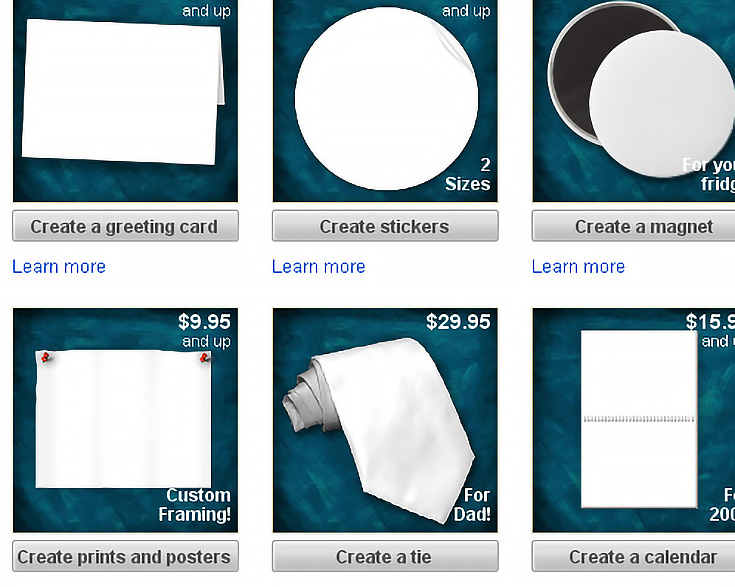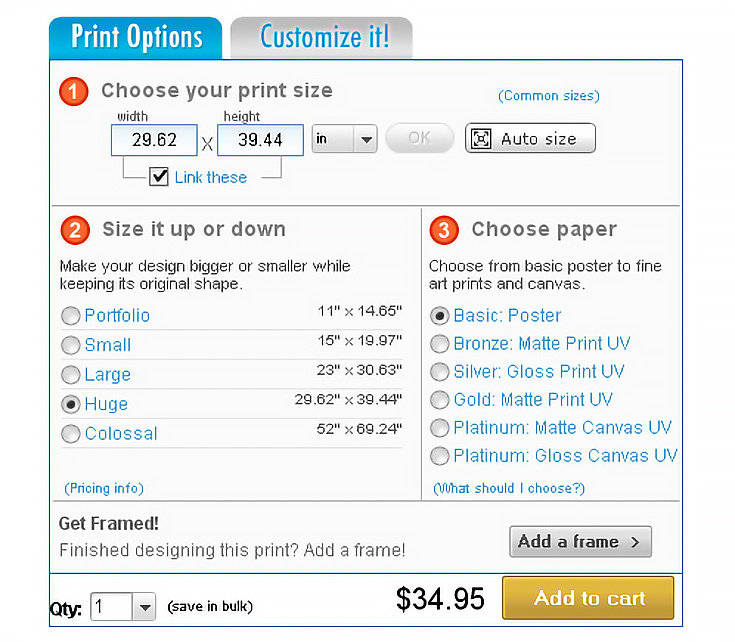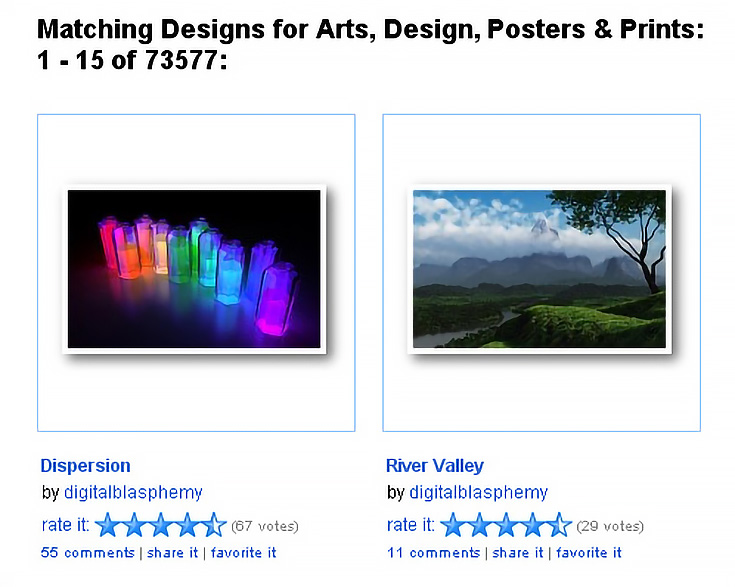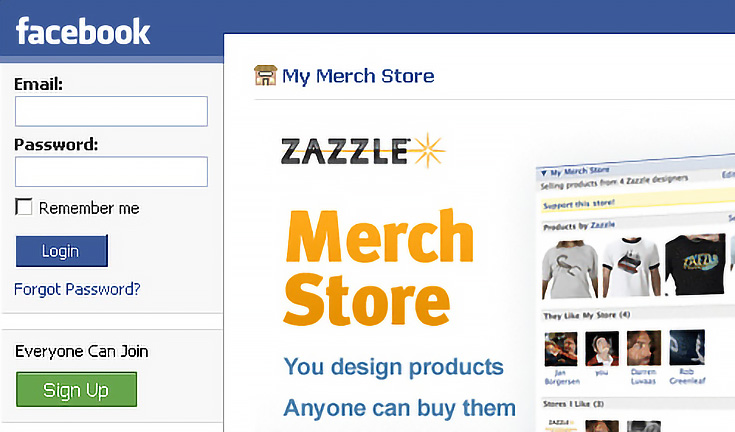EDITOR’S NOTE: Prices and information below may be out of date. Since launching our own art website service for artists at Foliotwist.com, we no longer feel unbiased enough to continue updating or reviewing other art website services. Visit the website below for their most recent information.

Zazzle.com is a print-on-demand supplier of various products, including posters and fine art prints. It’s fairly similar to CafePress.com (another print-on-demand service I’ve reviewed) but with enough clear differences that I’m sure some artists will prefer Zazzle over the competition.
First off, Zazzle.com operates just as you’d expect (that is, if you’re familiar with the print-on-demand industry.) Artists and designers can choose from hundreds of products—Zazzle offers over 350—and upload their own artwork, logos, slogans, or designs to be printed on those items.
When someone purchases a product from the Zazzle marketplace, it’s printed immediately and shipped out to the buyer while the artist or designer who created it gets a percentage of the sale. In Zazzle’s case, that percentage is determined by the artist—anywhere from 10% to 99%.
For example, the default price for a white t-shirt at Zazzle is $14.95. If you upload your artwork onto a t-shirt and choose a 10% cut, you’ll make $1.50 for every sale. If you’d rather make 20%, Zazzle will increase the t-shirt’s price to $16.85 so you can earn that percentage while they still earn their base price of $13.45.
Some of the products you can create are greeting cards, stickers, buttons, shirts, postage stamps, mousepads, ties, posters, prints. . . and many more items I won’t take the time to mention here.
After comparing Zazzle’s prints and posters with the options offered by CafePress, I found that Zazzle gives artists a bit more selection in size, materials, and framing.
They don’t strike me as being quite as good as a dedicated fine art reproduction company like Imagekind or RedBubble, but they do offer 5 sizes of prints (16.5×11, 22.5×15, 23×34.5, 35×52.5 and 52×78 inches) and they give buyers the choice of 7 printing surfaces, including two types of canvas.
(They also have framing and matting solutions for every size.)
Occasionally all those options felt like they were crammed into too small of space (see above) but at least they were there.
I really liked the fact that Zazzle allows everyone to join for free. There’s no limit on the number of products you can create, display, or sell, and no monthly fees. Each member receives their own gallery—located at zazzle.com/their-name—and are able to customize that space to create a unique atmosphere for their products.
I was also pleased to see that the number of fine art prints and posters available on Zazzle wasn’t astronomically high. Sure, 73,000+ is still pretty stiff competition, but it’s a lot less than the millions of prints you’d be up against on CafePress.com.
Zazzle does have a pretty solid social network of users in place, so when browsing through the artwork you’ll notice that it’s often ranked according to how the Zazzle community has rated it.
This means that if you’re promoting your Zazzle artwork via a blog, you might be able to influence a bunch of your loyal readers into rating your work favorably, which in turn would increase your rankings inside Zazzle itself.
Don’t have a blog? Here’s 9 reasons why an art blog might be right for you. . . but there are other options too, I suppose.
Zazzle actually makes it pretty easy to promote your posters and prints on the two biggest social networking sites, MySpace and Facebook.
If you hook into either of those, then you’ll be a big step ahead of anyone who’s using Zazzle by itself. (You’ll be miles ahead if you’re sending in visitors through a blog.)
Overall I was pretty impressed with Zazzle. More so than CafePress, I think. . . Zazzle had a few more options for art prints and it seems to be a bit more connected with the way the internet works today.
Of course, if you’re not interested in putting your art on anything more than paper or canvas, you should probably check out Imagekind or RedBubble. The quality and clientele (art buyers) will definitely be more suited to your taste.
If you think you might want to throw your art on a mug, tie, or postage stamp, however, then head on over to Zazzle. Remember, it doesn’t cost a thing, so if you’re curious, go ahead and join for a few days or a few weeks—maybe it’ll work for you!
This post may contain affiliate links.




